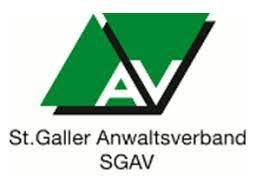How do I convert my sole proprietorship into a corporation (stock corporation or LLC/GmbH)?
On one hand, corporations (LLC or stock corporation) can be founded by contributing money. On the other hand, if a sole proprietorship already exists which is to be continued as a stock corporation or limited liability company, it is possible to transfer all assets and liabilities to the new company and thus pay off the capital stock shares. Which steps have tob e taken and what are the important formalities?
For example, years ago you opened a bakery-pastry shop with a café. As a result of the form-free foundation and the lack of minimum capital requirements, you initially operated under a sole proprietorship. Today the business is flourishing. For better succession planning as well as minimizing the liability risk, the sole proprietorship is to be converted into a corporation (LLC or stock corporation).
In this context, it is often spoken of a "conversion", but formally it is a qualified form of new incorporation. The assets of the sole proprietorship are transferred to the corporation. It is mandatory that the takeover balance sheet shows a surplus of assets. If it is sufficient, the founding capital can be provided by the asset surplus and no cash contribution is required. If the tangible assets are not sufficiently valuable, the company capital (at least CHF 20'000 for the LLC/CHF 100'000 for the stock corporation) can be paid in cash. The assets of the sole proprietorship are then transferred to the newly founded company. Mixed constellations or the transfer of only parts of the assets are also possible. The circumstance of the transfer of the assets is disclosed in the articles of association and in the commercial register as contribution in kind, acquisition in kind or intended acquisition in kind.
1. Transfer of assets according to the Merger Act (FusG)
Your sole proprietorship is registered in the commercial register. You wish to transfer all assets and liabilities to the new company. The takeover balance sheet shows a surplus of assets of at least CHF 20'000. The foundation capital is covered and no cash deposit is required. As the sole proprietorship is registered in the commercial register, the assets can be contributed by means of a transfer of assets in accordance with the Merger Act (FusG). An inventory is drawn up showing the assets and liabilities to be transferred. In the accompanying written asset transfer agreement, the total value of the tangible assets to be transferred and the employment relationships to be transferred must be recorded, among other things. If real estate is to be transferred, the asset transfer agreement must be publicly notarized. As a founder of a limited liability company, you must give an account of the nature and condition of the assets and the appropriateness of the valuation in a formation report. This report must be audited by a licensed auditor. The deed of formation of the LLC must be publicly notarized by a notary public. In return, you receive all the ordinary shares of the new LLC. If the surplus of assets is greater than the required foundation capital, this amount can, for example, be credited to you personally as a loan to the new LLC. By law, the LLC can dispose of all assets listed in the inventory immediately after registration in the commercial register. The sole proprietorship is thereafter deleted from the commercial register.
2. Transfer of assets according to the Code of Obligations (OR)
If a sole proprietorship is not registered in the commercial register, it does not benefit from the facilitated transfer of assets under the Merger Act. It is true that the assets of the sole proprietorship can also be transferred contractually to the new company. The transfer is made individually in accordance with the respective formal requirements however. For example, ownership of movable assets (e.g. kneading machine) must be transferred to the LLC, receivables (e.g. from customers arising from the delivery of baked goods) must be assigned and debts must be assumed. In addition, the steps of qualified formation concerning the transfer of assets according to law of coporate mergers apply.
3. Case-by-case assessment
A careful assessment of the appropriate solution in each individual case is essential. The specific needs, the timing of the transfer as well as the tax implications of the business have to be taken into account when making the decision.
4 Further advice
Should you have any questions regarding your individual case or require further advice, we will happily assist you.
« back




